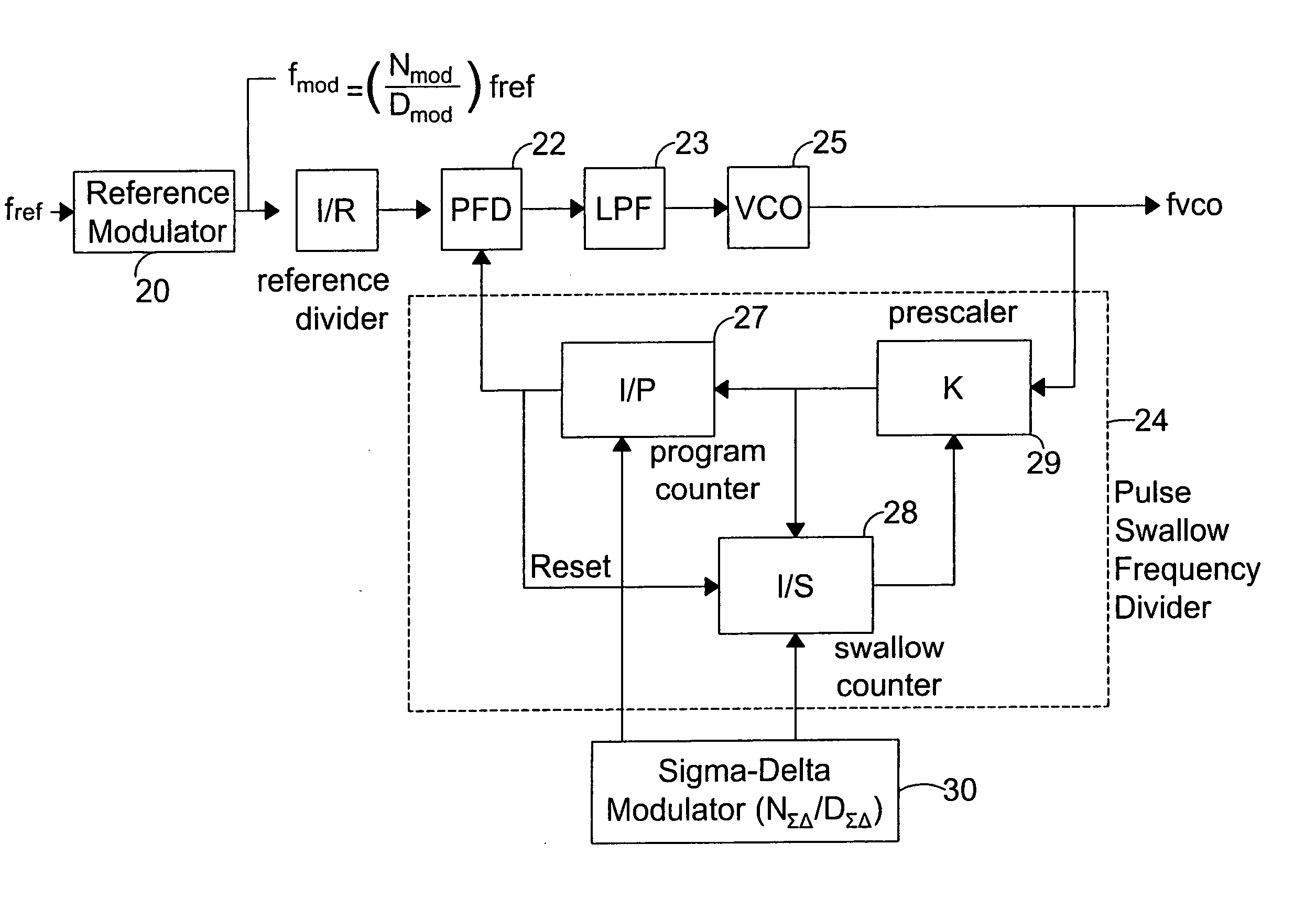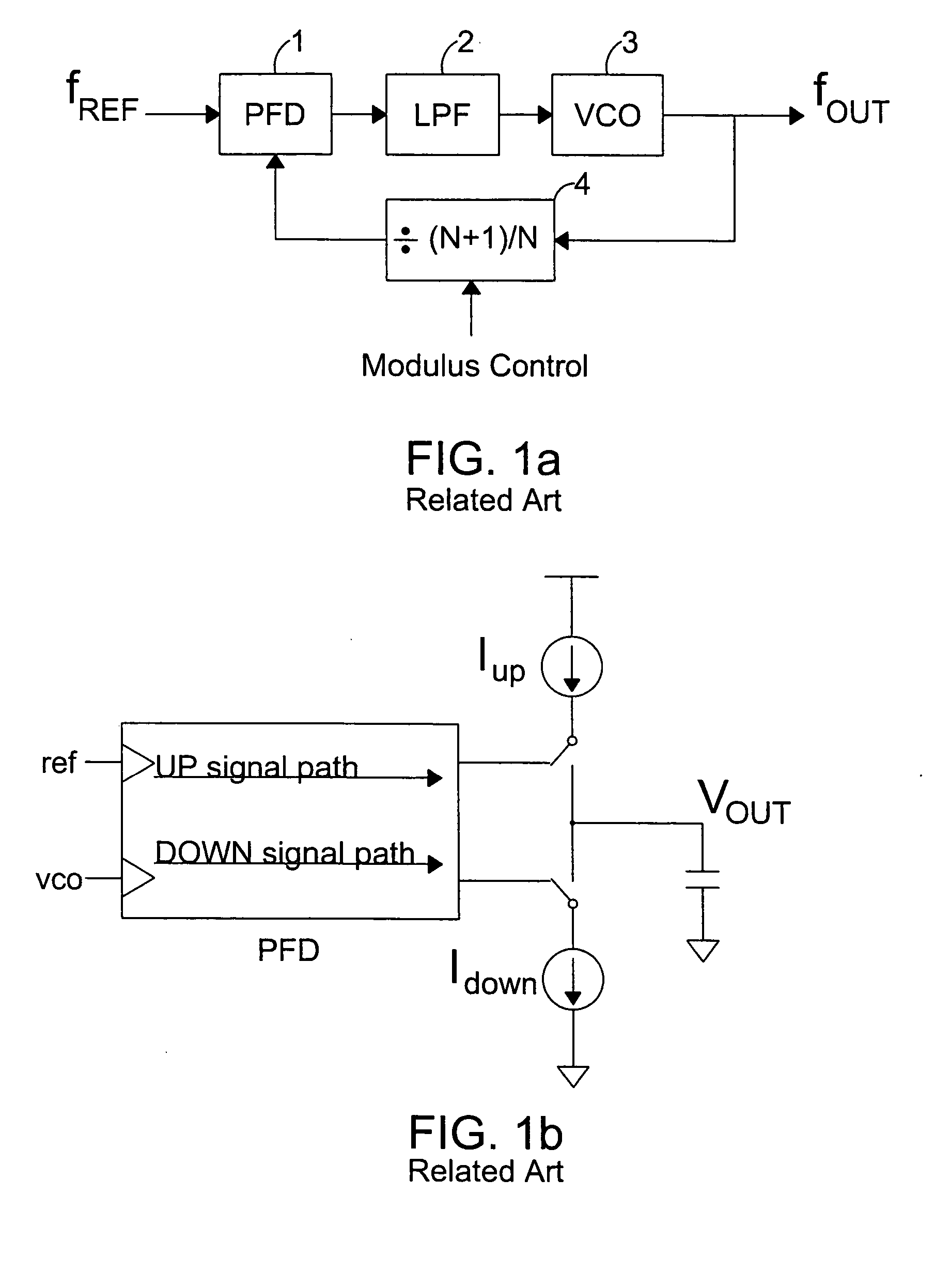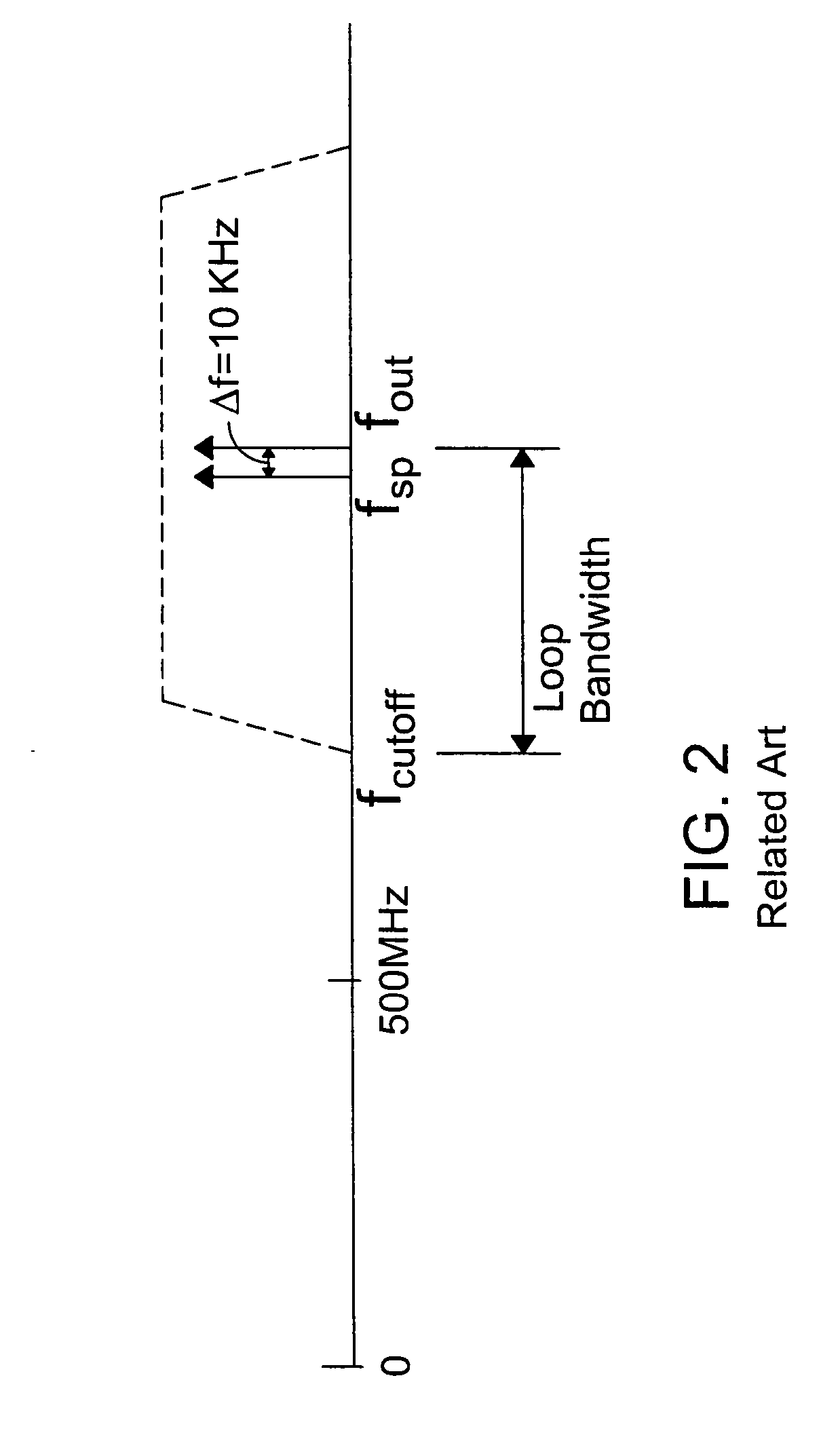System and method for suppressing noise in a phase-locked loop circuit
a phase-locked loop circuit and phase-locked circuit technology, applied in the direction of pulse automatic control, pulse technique, counting chain pulse counters, etc., can solve the problems of reducing the loop bandwidth to this value, affecting the lock time and amount of phase noise in the pll, and the loop bandwidth not only affects channel spacing
- Summary
- Abstract
- Description
- Claims
- Application Information
AI Technical Summary
Problems solved by technology
Method used
Image
Examples
Embodiment Construction
[0092] Table 2 shows exemplary values that may be used in accordance with the present invention. To achieve an acceptable level of spur reduction, the 19 N D
[0093] ratio is selected to be large to shift spurious signals outside the cutoff frequency. Also, the reference frequency f.sub.ref is modulated by an 20 N mod D mod
[0094] ratio which ensures that the harmonics of f.sub.mod is not close to the harmonics of the original reference frequency f.sub.ref.
2TABLE 2 Nearest N Fvco / for Fvco / Fref Fvco Fref Fref R K P S N D N / D Nmod Dmod 46 905.29 19.68 46.00051 1 4 11 2 1 1968 0.0005081 8 9 47 924.97 19.68 47.00051 1 4 11 3 1 1968 0.0005081 8 9 48 944.65 19.68 48.00051 1 4 12 0 1 1968 0.0005081 8 9 49 964.38 19.68 49.00051 1 4 12 1 1 1968 0.0005081 8 9 50 984.01 19.68 50.00051 1 4 12 2 1 1968 0.0005081 8 9 51 1003.7 19.68 51.00051 1 4 12 3 1 1968 0.0005081 8 9 52 1023.4 19.68 52.00051 1 4 13 0 1 1968 0.0005081 8 9 53 1043.1 19.68 53.00051 1 4 13 1 1 1968 0.0005081 8 9 54 1062.7 19.68 54....
PUM
 Login to View More
Login to View More Abstract
Description
Claims
Application Information
 Login to View More
Login to View More - R&D
- Intellectual Property
- Life Sciences
- Materials
- Tech Scout
- Unparalleled Data Quality
- Higher Quality Content
- 60% Fewer Hallucinations
Browse by: Latest US Patents, China's latest patents, Technical Efficacy Thesaurus, Application Domain, Technology Topic, Popular Technical Reports.
© 2025 PatSnap. All rights reserved.Legal|Privacy policy|Modern Slavery Act Transparency Statement|Sitemap|About US| Contact US: help@patsnap.com



